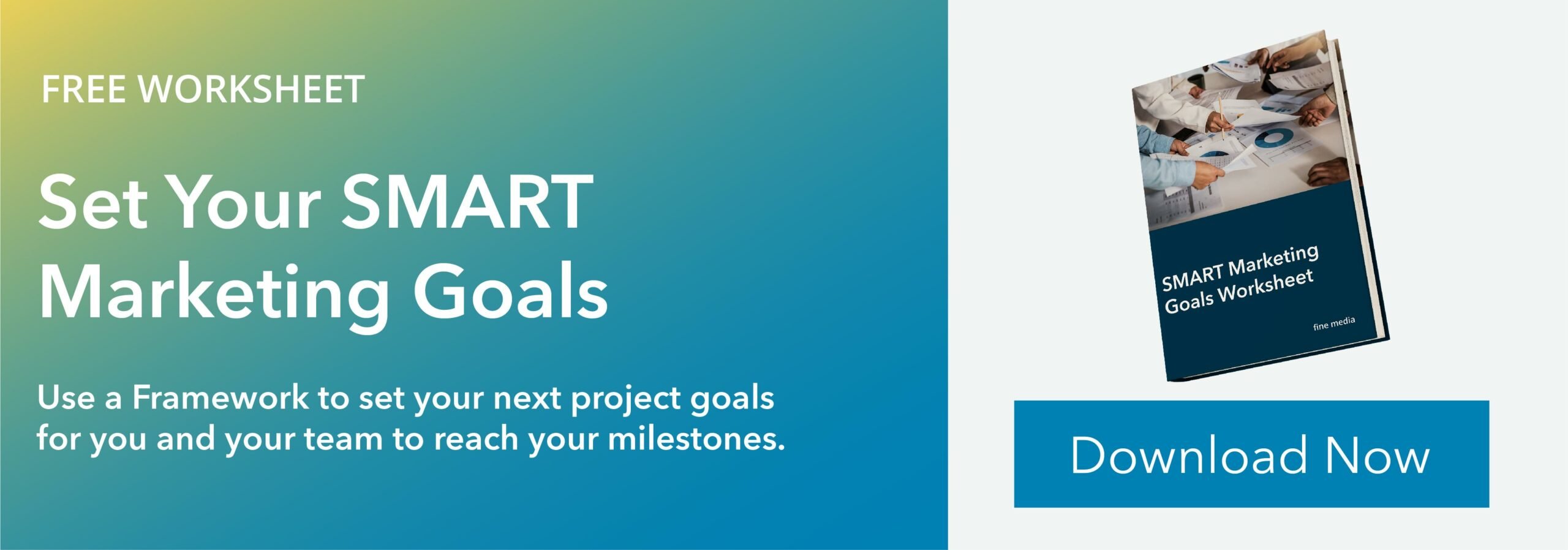Have you ever read a blog post, came away with helpful knowledge, and had a positive opinion about the writer or brand that produced the content?
Chances are if the blog post was written effectively and by a thought leader in that industry. This is why improving your content strategy and writing content on an ongoing basis are so critical to your business.
One of the best ways to brand your business and grow your audience online is by leveraging the power of blogging. The more often you blog and publish content, the more likely it is that you’ll rank well in search engine results.
The trick is creating a blog that’s successful based on quality content, structure, topics, and an approach that optimizes conversions while growing your email list. There’s a lot of work that goes into writing a blog — both on it and off it.
To help get you started in this process we put together a comprehensive guide on how to build, launch and manage a successful blog for your business.
What is a Blog?
So what is a blog? That's the big question right there. A blog, in its most elementary sense, is just an online journal — a diary online (well, not all diaries are blogs but you get the point).
A blog post is simply any article, news piece, or guide that's published in the blog section of your website. Blog posts should be interesting, engaging, and well-written. This is because they are meant for your audience to learn from and attain great value in reading them.
Running a blog is one of the best ways to rank your website on Google, position yourself as an expert in a given field, and drive traffic, leads, and sales to your business website.
Why your Business Should Blog
Content marketing is a long-term strategy. You can't create a few blog posts, and then sit back and wait for customers to come. You need to commit to blogging regularly and sharing your content on social media. Though it may seem tough to keep up with, someone has to do it.
Blogging is really important because it helps people discover your website who aren't familiar with your brand. They may have found one of your blog posts through search, social media, or another source, but once they get there and read it, they're more likely to check out the rest of your content on your site.
Your blog is also an opportunity for you to showcase your expertise, authority, and trustworthiness in your industry. Now that you're providing useful advice and tips for free, people are much more likely to pay attention when you make an offer — whether that's a product, service, or some other paid offering from your business.
More website visitors means more opportunities to convert prospects into customers. Blogging helps you connect with your audience and offers the following benefits:
1. Blogging is cost-effective
Creating blog content costs 62% less than traditional marketing and generates about 3 times as many leads. In an inbound marketing strategy blogging is key to driving leads to your business.
Instead of going with the traditional approach of spending money on billboards, or TV ads you are likely to get more targeted traffic for less.
The people who find your content are looking for it, but the content doesn’t find them. It’s one of the most cost-effective ways of guiding your prospects through the buyer’s journey.
2. Blogging strengthens your SEO
Blogging helps your website rank better in search engines as well as drive leads and traffic from search engine results pages (SERPs).
Blogging is an integral part of any SEO strategy, as it shows search engines that your website is active, informative, and relevant. This makes you more visible in search results and helps your target audience find you more easily.
Organic search engine optimization is one of the most effective ways to drive free, targeted traffic to your website. Google and other search engines are constantly evolving their algorithms to deliver the most relevant and up-to-date content to users.
So, it's important to frequently publish high-quality blog posts that are optimized for keywords related to your business and industry.
3. Blogging Helps you Connect With your Audience
When used correctly, blogging can help you get to know your target audience better and find out what their problems are so that you can solve them effectively. When you implement the inbound business methodology in your business, everything you do is for your user.
When you answer questions people are searching for answers to, you are making it easy for them to solve their problems. This builds a connection and a strong relationship between your audience and your brand because they will keep coming to your website for answers.
4. Great at Increasing Brand Awareness
One Blogging can also help you build credibility in your sector. As customers read and trust your blog content, they'll see you as an authority in the industry and will be more likely to purchase from you in the future.
About 31% of marketers use blogging to build brand awareness, which comes as a surprise given how effective a blog is at building brand awareness.
5. Build a Community Around your Business
Creating regular blog content also helps you build a relationship with your audience and establish expertise in your niche. When done right, blogging will help you generate leads and increase sales for your business.
6. Boost Engagement on Social Media
Blogs are also great for social media marketing. You can share blog content on your social profiles to increase followers, engage with your audience, and drive traffic back to your site.
7. Generate Leads and Grow Revenue
As a result of improved communication and interaction with your audience through blogging, your audience will trust you more.
The goal of content promotion is to maximize the social media reach of your audience and increase the overall popularity of your brand. This will generate leads for your business.
How you do that depends on the type of content you're sharing, and which social media channels are best for your brand.

How to Start a Blog
- Research and understand your audience.
- Research your competition.
- Choose the topics you will cover.
- Identify your unique angle.
- Name your blog.
- Buy your blog domain.
- Pick a CMS and set up your blog.
- Design your blog and customize its look and feel.
- Write your first blog post.
1. Research and Understand your Audience.
Understanding your audience is incredibly important—after all, how can you know how to write anything without knowing what they want to read?
And it's not just a matter of the stuff they like reading online. It's also the kind of content they'll want to share with their friends, that will convince them to click on a link and visit you on your website, which will make them recommend you to their coworkers.
So take some time to think about whom you're writing for. o your research, and make sure your content answers these questions. What do they care about?
- What would they likely be interested in?
- What are the kinds of things that get them talking (and sharing)?
Make sure you have a clear picture of your audience in mind when you write and don't be afraid to ask for help if you're not sure. This is why creating a buyer persona(s) is an important exercise. Always think about what you know about your buyer personas when researching your blog topic.
2. Research your Competition.
Spending time researching your competitors can be both fun and a great way to learn.
Look at their popular, highly-reviewed blog posts. These posts are good indicators of their audience’s interests. If they’re popular and reviewed, it means people found them valuable and relevant — and they probably will again if you write about similar topics.
With Google, you can find the most popular blogs in your industry by typing into the search bar “top [industry] blogs” and seeing what comes up.
You may also want to check out a blog rankings site like AllTop, which lists many of the top blogs for any category you want. You can also see the most recent posts on those sites so you can get some ideas for content topics to write about.
You should use competitor analysis to identify and evaluate competitors. This will help you figure out where they might get their traffic from, what they post on social media, what type of content they create, and how they market it.
The best way to do this is to visit your competitor’s website and look at their blog posts. What you want to do is determine if there are any holes in their content that you can fill by creating better content.
Analyze their design (blog layout), voice and tone, and the topics they have covered that readers love.
3. Choose The Topics you'll Cover
Given all the research you have done on your target audience, and your competition, it's time to decide which topic you will cover on your blog. This is your niche, desired by your target audience.
So, knowing whom you are writing for, how well you understand the topic, and whether or not is relevant to your target audience is a good place to start.
Determining the topic you will write about will go a long way in finding the relevant keywords and the angle of your writing.
4. Identify your Unique Angle
Identify your unique point of view and the perspective you bring to your blog. There are several steps involved in determining the trajectory of your blog's future, and choosing the best one is essential.
Ask yourself the following questions;
- What unique experience makes you a thought leader on the topic?
- Is there a problem you are solving for your readers, if yes what is it?
- Do you plan on covering trending topics?
What you choose is totally up to you. Rember your readers have to trust you through your writing and content. If they don’t feel you are solving their unique problem, they will not come back to your blog.
5. Name Your Blog
A blog name is a great way to show your readers what the blog is all about. Your blog name should reflect your chosen topic.
Make it easy for your readers to remember your blog name. One of the best ways to name a blog is through keyword research. Looking at what people are searching for on google through the google keyword planner can help you come up with some great names.
If this doesn’t work for you there are many other ways. One of them is using the blog name generator by Themeisle.
Remember to make sure your blog name is unique and is not being used by anyone else. The fastest way to confuse readers is by having a name used by other blogs, which will hinder people who are looking for your content to find it.
6. Buy your Blog Domain.
A domain is part of the web address people would use to find your blog/ website online. You can choose to buy a new domain or add a subdomain to an already existing company domain.
For example, if your want to have a new domain it will look like this: www.yourblog.com. If you want to use a subdomain to your company domain (www.yourcompany.com), it will look like this: blog.yourcompany.com
Some hosting services include hosting subdomains as free services. You can buy a new domain from any of the many hosting service providers.
7. Pick a CMS and Set up your Blog
A CMS is a platform on which you host your website content. The platform can either include domain management services, or you can use it to manage domains that are hosted elsewhere.
Some CMSs have a wide range of features and are useful for managing all aspects of website hosting, including email marketing. Others are more narrowly focused on the task of hosting website content and handling domain management.
If you want to manage your domains, but use a CMS to host your website content and handle email marketing, we recommend Hubspot CMS. If you want to use WordPress to host your site, we recommend WordPress hosting on WP Engine.
8. Design your Blog
Once you have your domain name set up, customize the appearance of your blog to reflect the theme of the content you plan on creating and your brand.
Customize colours, logos, and fonts to fit your brand. Make sure you're using similar colours across all of your promotional materials and advertisements—even if they're not on your blog. Think about what makes your brand unique, and try to bring those elements into the design of your blog.
Add an "about" page to give users an idea of what they can expect from reading the posts on the site. This is a great place to link out to other pages you own and other forms of social media, such as Instagram or Twitter.
Make sure that each post has a title that grabs the readers' attention, as well as images that illustrate what each post is talking about.
9. Write your First Blog Post
Blogging is a fun and exciting way to share your thoughts on a specific topic, whether you are trying to build a brand for yourself or your company.
The design and layout are great and functionally necessary, however, it's the content that will draw your readers in and keep them coming back. You can write about almost anything, but if you want to get people talking and sharing, you'll need to focus on topics that resonate with your audience.
As with any other writing project, it's important to remember that the first thing your reader sees is the title of your post. Think about what you want them to know about your post, then work backwards from there until you come up with a clever, informative headline.
The next step is where many people get stuck; they don't know what to write about! Don't worry—we've got some great ideas for you based on our years of experience blogging.

How to Write your First Blog Post
Writing a blog post is more than just moving your mic gain, picking an angle, and typing up some words. It's about engaging your target audience, prioritizing their needs, and ultimately becoming relevant in their journey to purchase.
- Research your topic
- Decide what your blog post is about
- Create an outline
- Pick a blog post title
- Write the main body of your post
- Write your conclusion and call to action
1. Decide What the Blog Post Is About
Now that you have your topic, it’s time to start writing. But first, you need to identify who your target reader is and what the goal of this blog post is. To do so, answer these three questions:
Who will read this? (This can be a specific person or a group of people.)
What action do I want my readers to take after reading this post? (You can ask them to subscribe to your email list, share the post on social media, react in some other way, or simply read another post on your blog.)
What knowledge does my reader need before they’re ready to take that action?
2. Pick a Blog Post Title
You should take the time to pick a title that is specific, catchy, and gets your point across in three commercials.
In the past, you may have heard people say that good titles are hard to come by, but they were wrong! The following are some simple steps on how to get a catchy title for your blog post.
3. Write the Main Body of Your Blog Post
Writing your main body might be the most daunting part of this whole process. It’s easy to get lost in the weeds, especially if you’re writing about a highly technical topic where there are lots of details to keep straight.
The good news is that you don’t have to write your whole blog post at once. (In fact, it would be super weird if you did.) Take it one step at a time and before you know it, you’ll have an entire piece ready to go.
4. Create an Outline
Creating a blog outline is important because it helps you organize your thoughts and structure the flow of your post. Instead of just jumping into writing, try creating a simple outline to start:
- Write down the main idea or topic you want to write about. This becomes the title of your post.
- Add three or four sub-points that will become the body of your post.
- Look up five to 10 different resources and add them to a list. These could be links to other websites, books, or even non-digital resources such as research studies or interviews you've conducted.
By creating a detailed outline before you begin writing, you get a better idea of what information needs to be included in each section and where (which sub-points are more important than others).
This makes it easier for you when it's time to sit down and write because the structure is already there—all you have to do is fill in the holes with your own words.
5. Write an Awesome Blog Post Introduction
To craft a compelling introduction, you should:
- Give the reader a reason to read your post. What's in it for them? Why is what you have to say important? Can you demonstrate that with some hard data?
- Provide context. If a reader only reads your introduction, will they be able to understand the rest of your post? (It should be a "yes.")
- Provide some background information. But remember not to give away all of the good stuff! Your readers want details and examples, so save some for later.
You want the reader to know what your post is about without telling them everything - think back to high school English class and those five-paragraph essays. This is where your thesis statement comes in handy!
6. Write Your Conclusion/Call to Action
It’s time to wrap up your blog post. Your conclusion should reinforce what the reader has learned, and you should leave them with something that makes them want to take action.
- To drive home the point of your blog post and make it easier for readers to remember, you can use one of these strategies:
- Summarize the main points made in your blog post
- Use a call-to-action that directs the reader’s next step (e.g., “share this on social media")
7. Publish, Share and Promote your Blog
When you're promoting your blog post, it's important to know that simply posting about it on social media is not going to be enough.
You need a content promotion strategy that will help you take advantage of social and digital technologies to get the word out about your business.
This strategy should include a plan for how you'll create, post, and engage with your social media content and should also help you track the results of your efforts so you can continue to improve.
Once you've created a great blog post, you must share it with the right people, on the right platforms. Here are some tips to make your content strategy work for our business.
First of all, don't overthink it. Make sure you're posting your content on the social media platforms you already have an active presence on. Choose a few sites that your customers are most likely to use, and focus on those.
Once you've chosen which platforms to use, make sure to keep a consistent schedule—don't just post when you feel like it!
This is even more important if you have more than one person posting for your company. Schedule the time and day you want them to post so that your brand isn't all over the place.
Finally, when posting, remember that each network is different—and therefore so are its users. Think about what kind of content they'll be looking for on each platform and try to adjust accordingly. For example: while Twitter users like quick hits of information or entertainment, Instagram users might appreciate more in-depth posts or visuals.

What Makes a Great Blog Post
When it comes to creating great blog posts that people can't help but share, there are a few basic guidelines you can follow. First and foremost, a good blog post is interesting and educational.
Blog posts should answer questions or help readers resolve problems they're experiencing. You have to do so in a way that will interest your readers.
To ensure your content is helpful,
- Research if necessary to convey your point, and make sure it's fresh and relevant.
- But the story doesn't stop there! You'll also want to make it skimmable; break it into digestible chunks so that it's easily read.
- Include interesting quotes or facts for emphasis on the subject, and paint a full picture with images, graphics, or video.
- Be sure to use Grammarly to catch mistakes before you publish, and if you don’t know where to start, start by telling a story.
- Reference social media posts, too — people love seeing their content republished elsewhere!
- Use long-tail keywords (keywords that are longer and more specific) in your blog post titles, headings, subheadings, meta descriptions, and body copy.
When you have put effort into compiling content for your readers, and made it simple for them to understand, they will love it. Your readers want you to write for them, not to give them information they won't understand.
Types of Blog Post Formats
Some blog posts are achieved in the form of an illustrated blog post, some are inspirational and some focus on tutorials.
But whatever your blogging style it’s important to know the difference between each of the most commonly used blog formats so you format your content appropriately.
1. List-Based Post (Listicle)
A list-based post (Listicle) is a popular format that simply lists out several ideas or examples. For example, you could start a blog post with the headline "7 Examples of Great Customer Service."
2. Thought Leadership Post
A thought leadership post is a long-form article that demonstrates your expertise or knowledge on a topic. These posts are often data-driven. The ultimate goal of these posts is to be recognized as an expert in the field and be a go-to resource.
3. Curated Collection Post
A curated collection post is a great way to round up lots of resources on a single topic. And yes not all blog posts are 100% original. It's also very shareable and allows you to link back to numerous sources. An example of this post is this list of 35 Incredible Inbound Marketing Statistics Marketers should know.
4. SlideShare Presentation
SlideShare presentations are another easy format for creating content. If you're going to give a talk or workshop at an industry event, why not write up the presentation as a blog post?
5. Newsjacking Post
Newsjacking is when you take advantage of the popularity of an existing news story to promote your brand.
This works well for brands that can quickly put together an infographic or report around the topic. Be careful not to offend anyone with your interpretation of the news story!
6. Infographic Post
An infographic is an image or design that visually explains a topic. Infographics are popular because they're easy to grasp and appealing to the eye.
An infographic post allows you to get creative with your content and make it interesting for readers. Visuals can help communicate information in a digestible way, so be sure to include them whenever possible in your blog posts.
Infographics are loved by social media users because they're so easy to share. There are now several online tools that make it simple for even non-designers to create beautiful infographics in minutes.
7. How-to Post
A how-to post gives step-by-step instructions on how to accomplish a task or solve a problem. For example, this post by Hubspot's Lindsay Kolowich is a guide on how to create an infographic in under an hour.
The post provides successful examples of infographics, tools you can use to create them, and useful templates you can use to get started.
8. Guest Post
A guest blog is a blog post written by someone from outside your organization and published on your website. It also applies when you write an article to be published on a different website other than your own.
Guest posts are often used as a way for bloggers to network with other bloggers in their industry, reach new audiences, and expand their following. They can also give you more time to focus on other business matters while someone else creates content for your site.
9. The Ultimate Guide
The ultimate guide is one of the most common types of blog posts. As the name suggests, it provides an in-depth overview of a specific topic. It’s often organized as a list and might include subheadings, images, and other relevant content.
This type of blog post length is often seen in the evergreen content format for search engine optimization (SEO). It doesn’t matter how much content you have because the idea behind it is to be the best resource out there.
For example, this post from Hubspot is an ultimate guide on how to get started with Facebook marketing. There are more than 10,000 words in this article but they’ve broken it down into multiple sections, making it easier to read.
10. The Beginner’s Guide
Beginner’s guides are another popular type of blog post. While they can be used to teach beginners about anything, they’re typically used to help people understand a complex topic in simple terms. For example, you might use them to explain technical terms or help people learn how to do something new.
11. “What not to do” Post
This type of post is typically a list of things you shouldn’t do. It’s like a regular “what to do” list, but with the opposite tone.
These posts are great for giving readers tips and advice, but with more of an emphasis on what they should avoid. If you want to make it even more interesting, offer up some real examples of people who screwed up.
12. Case Study
A case study is where you give examples of how one person or business solved a problem. For example, if your blog is about “how to grow your vegetables at home,” you could write a case study about someone in your area who grows their vegetables.
You could find out why they did it, what they do with their vegetables, and any other information that would be relevant to your audience. It’s important to include lots of facts and figures in this type of post.
13. “What is” post
These are pretty self-explanatory posts that simply explain something in detail. These types of posts can help readers understand something better, which is why they can be so popular and useful.
If there’s a popular concept within your industry, this could be an opportunity for you to define it in layman's terms. This will help educate your audience and build their trust in you as an authority on the topic.
The Ideal Blog Format
(Blog formatting Tips)
If you want to write a successful blog post, you need to pay attention to the basics. One of those basics—a tiny detail that can make a big difference—is the format of your blog post.
Formatting your blog posts is almost as important as what you write. That might sound like an exaggeration, but it isn't. If you don't format your blog post correctly, readers will subconsciously perceive it as "unprofessional" and not give it the time of day (or read).
If you want your blog posts to be successful, they need to be easy to read. And the only way to make reading easy is to use the right formatting. With that in mind, here are some tips for formatting a blog post so it's readable by humans.
- Start with a strong blog title
- Include headings (H1, H2, H3, H4, etc.) and subheadings to arrange ideas.
- Centre your Images.
- Add alt text to images
- Keep your sentences clear and concise. (keep your paragraphs short)
- Use strong visuals (relevant images and illustrations).
- Break up text with bullet points
- Us font Hierarchy and correct spacing
- Include bold text for emphasis
- Add a table of contents
- Refer your readers to relevant links
- Make sure your call to action is obvious within the post.
Launch your Blog and Share
Writing a blog post can be daunting, but after you break it down into pieces and get started following this outline, it becomes easier.
Ready for the good news? Writing a blog post isn’t as hard or time-consuming as you think. It is one of the easiest things you can do to grow your business and build your brand.
Writing regularly and consistently can help get you noticed on social media, attract more visitors to your website, establish credibility in your niche, grow an audience of loyal fans, position yourself as an expert in the industry, and eventually make more money online.
So if you have been wondering how to start a blog or how to write a blog post that people want to read — we are going to show you everything you need to know!




